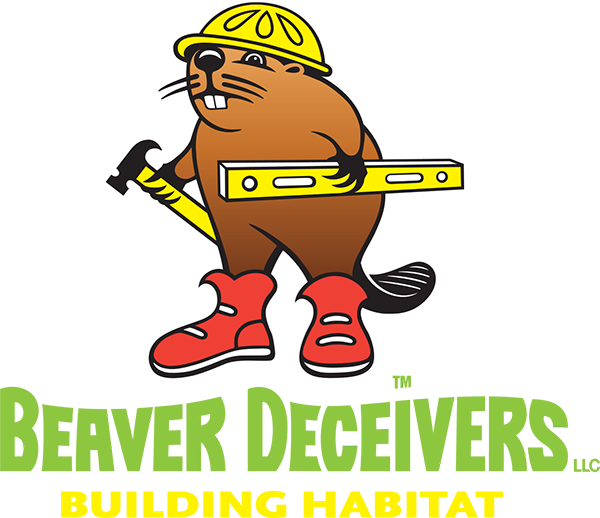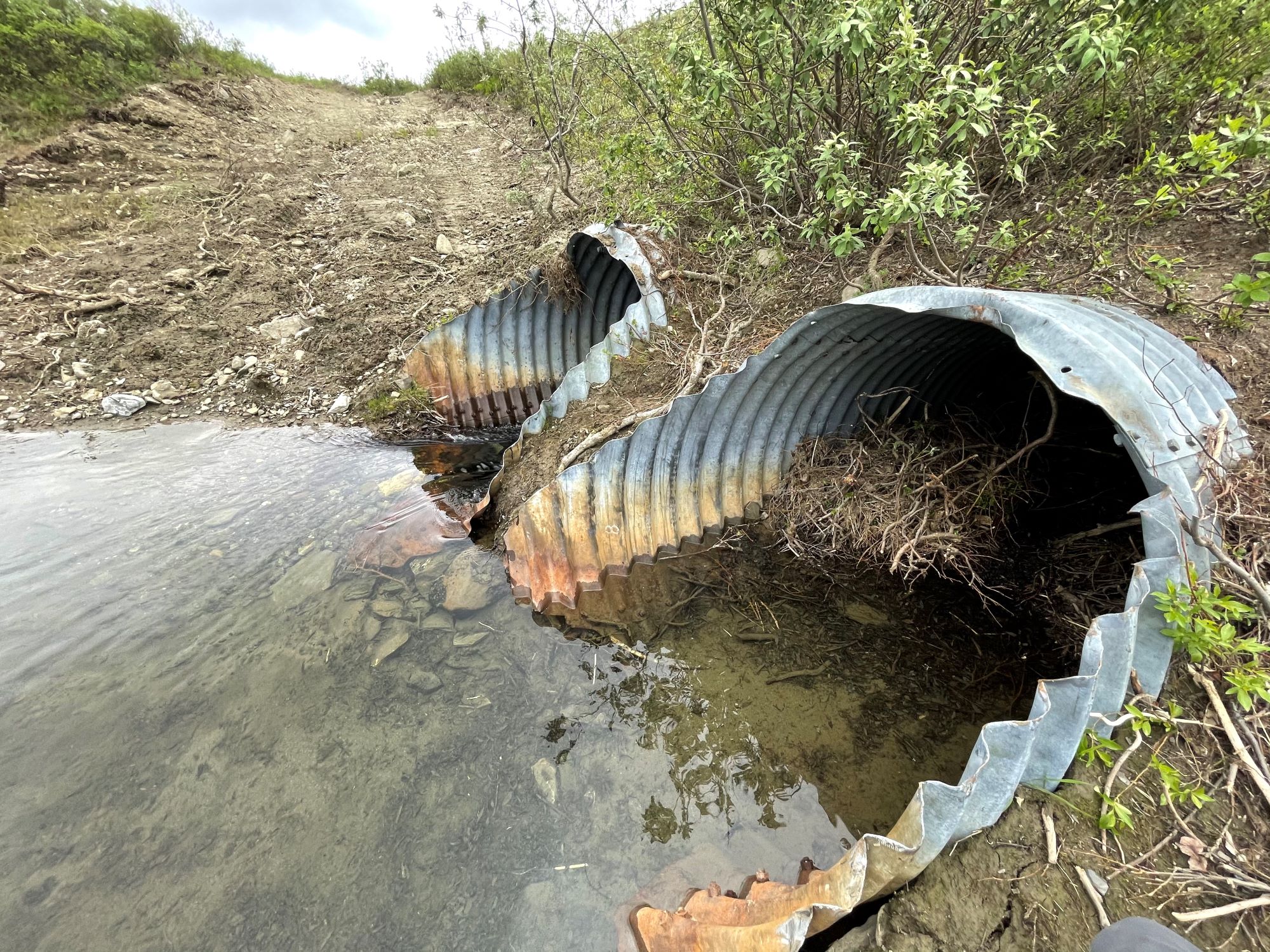By Skip Lisle, President, Beaver Deceivers, LLC
A culvert that is in beaver-damming habitat—low-gradient areas on small streams—will almost always become clogged by beavers if it is not protected with a high-quality “flow device” (HQD). Our proprietary Beaver Deceivers™ (BDs) do just that in a reliable, long-lasting manner. However, we often must clean old dams out of culverts before we can begin to protect them. If a culvert has at least three feet of non-flooded height on the downstream side of a dam, the best and by far the least expensive way to do this is usually by hand from inside the culvert.
There are two other scenarios, however, where we might recommend that this be done with machinery: First, when the built-up, upstream reservoir is huge and there is a great deal of pressure on the beaver dam. Second, when beaver dams have been ramrodded with a pole or a grappling hook has been pulled though repeatedly over the years in the same culvert. This sometimes creates an extremely long, thick dam, which is much more difficult to remove by hand. Usually, we would have to evaluate these factors with a site visit.
Relatively new beaver dams that have not been damaged have a predictable structure and are fairly easy to remove. They have sticks on the back side that are mostly parallel to stream flow. These are the frame that supports the muddier, water-tight front of the dam.
Working from the downstream side of the dam, we first remove all these sticks by hand (literally) and get them out of the culvert. Then, using a garden cultivator, we gradually begin to pull the mud back and off the top of the dam. As the water begins to flow it aids the debris-removal process by sweeping mud and small sticks downstream. Bit by bit, we remove the entire dam in this way. Even with the back-side sticks removed, dams have enough internal framing so they generally hold together as we reduce them vertically.
We want as much “freeboard” as possible for work inside a culvert. Therefore, if there are clogged culverts on several adjacent highways, we would start on the one farthest downstream and then work our way up. This “stacked” scenario is rare, but it’s possible on all large highways with two parallel roads. Before entering the culvert, we would also breach any beaver dams immediately downstream to maximize freeboard. In a line-up of clogged culverts, the downstream one(s) is not likely to have a large, dangerous reservoir. That water body will end at the next upstream culvert. The lower culverts could likely be cleaned by hand safely even if there is a huge reservoir on the culvert farthest upstream.
Using coffer dams and heavy equipment to remove beaver dams may be necessary sometimes. However, it is likely to be orders of magnitude more expensive than the process detailed above. Frequently, it also damages culverts. (These costs also hint at how quickly and repeatedly HQDs pay for themselves.) Therefore, it is worth it to first consider the possibility of removing dams by hand with the help of skilled and experienced specialists.
Usually, culvert spelunking is much less dangerous than it sounds. But it is difficult. Therefore, we want to get paid well for, as Mike Rowe would call it, this dirty job. Combined with a BD, it will still be the beginning of one of the best investments you’ve ever made.

